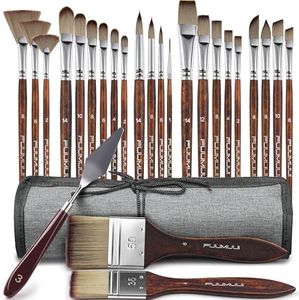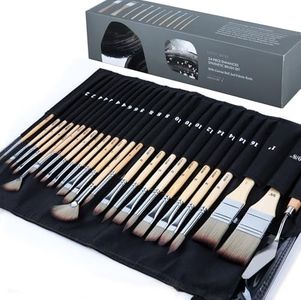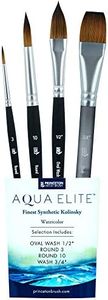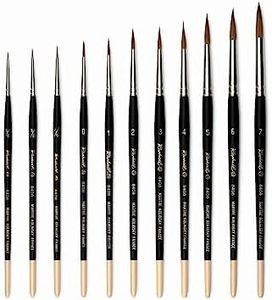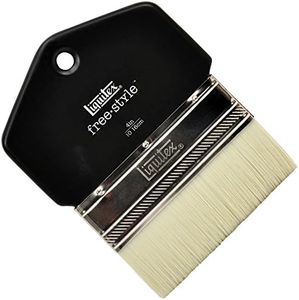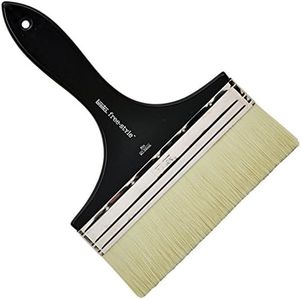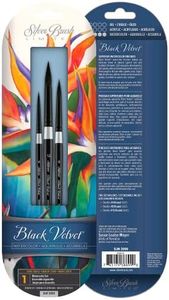We Use CookiesWe use cookies to enhance the security, performance,
functionality and for analytical and promotional activities. By continuing to browse this site you
are agreeing to our privacy policy
10 Best Artists Paint Brushes
From leading brands and best sellers available on the web.Buying Guide for the Best Artists Paint Brushes
Choosing the right artist's paint brushes can make a big difference in your painting experience and the results you achieve. There are many types of brushes, each serving different artistic needs, so it's important to understand the basics before making your selection. Think about the kind of paint you use (acrylic, watercolor, oil), your preferred painting style, and the effects you want to create. A good approach is to start with a few versatile brushes and expand your toolkit as you gain more experience.Brush ShapeBrush shape refers to the design of the brush head; common types include round, flat, filbert, fan, and detail brushes. Shape is important because it affects the marks you can make; for example, round brushes are good for lines and details, flat brushes are perfect for broad strokes, and filbert brushes help blend and create soft edges. If you want to create fine details, choose smaller, pointed rounds; for washes and wide areas, flats or large filberts work best. Consider what kind of strokes and textures you’d like to achieve when picking brush shapes.
Bristle MaterialBristles can be natural (from animal hair) or synthetic (man-made fibers), and the choice affects how the brush handles paint. Natural bristles are often softer and better for watercolors, while hog bristle brushes (also natural) are stiffer and good for oils. Synthetic bristles are durable and work well with both acrylics and water-based paints. If you work with a lot of water and want smooth blends, softer bristles are ideal; for thicker paints and texture, go with firmer bristles. Decide based on both your painting medium and preferred brush feel.
Brush SizeSize refers to the width or diameter of the brush head, ranging from very fine (for details) to large (for bold strokes or washes). This is important because the size determines how much paint you can apply in one stroke and how much control you have over details. Small brushes are best for fine lines and small details, while medium to large brushes are best for covering big areas or making significant shapes. Your choice should depend on the type of painting you do most often; choose a variety that matches how large or detailed your work tends to be.
Handle LengthHandles can be short or long, with each suiting different types of painting. Short handles allow for more control and are preferred for detail work or when painting up close, often with watercolors. Long handles are designed for painting at an easel from a distance, permitting broader, freer movements, commonly used with oils and acrylics. Think about how you like to work—if you paint at a table, a short handle might feel better; if you usually stand at an easel, a long handle will give you better maneuverability.
Ferrule QualityThe ferrule is the metal piece that connects the bristles to the handle. A good ferrule is rust-resistant and clamps the bristles securely, preventing shedding and loosening over time. This is important for durability and for maintaining brush shape. Brass or nickel-plated ferrules are considered reliable. If you want your brushes to last longer and maintain their performance, choose brushes with sturdy, well-attached ferrules.
